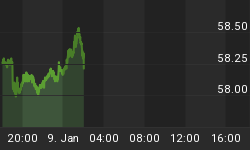NATO has been suffering from an existential crisis since the fall of the Soviet Union in the early 1990s, and while the reemergence of a threat from Russia more recently gave it a new lease on life, the furthering of that threat and the bigger question of China’s quest for global dominance is its savior—or its undoing, if it can’t keep the tech advantage.
After much NATO-bashing this year from the Trump administration, and after the European Union announced its own coalition of European militaries earlier this month, Washington is suddenly playing nice again—sort of. Earlier this week, U.S. Defense Secretary Jim Mattis went as far as to say that NATO was the “cornerstone” for the protection of Europe.
Of course, it was a bit tongue-in-cheek because Mattis was directly responding to the EU’s new “real European military” and France’s suggestion that Europe can protect itself without the U.S.
“We see NATO as the cornerstone for the protection of Europe in the security realm and we fully support nations doing more to carry the load,” Mattis said, in a clear reference to Trump’s beef with America’s portion of the bill for funding the military organization.
But whether NATO or the new, “real” European military ends up being the “cornerstone” is beside the point: Both are unprepared, but NATO is now looking to advanced technology to render it more than just an irritant in Moscow’s backyard.
It’s intended to be a high-tech metamorphoses following the appointment of General Andre Lanata as head of the NATO transformation command in September, and for now it involves the lower-hanging tech fruit of 3D-printed spare parts and microdrones with night vision.
The 3D printing of spare vehicle parts helps with vehicles breaking down in the cold, and the microdrone, which can see in the dark, is said to be one of the smallest in the world.
And they recently tested them out Trident Juncture war games in Norway—the biggest they’ve held since the end of the Cold War, according to Stripes.
Addressing a defense industry forum in Berlin following the war games, NATO Secretary-General Jens Stoltenberg said that “Many of these technologies are about reacting and responding more quickly, seeing further and detecting threats well in advance”. Related: IMF Calls On Central Banks To Consider State-Backed Crypto
But the military magazine also made it clear that NATO’s high-tech future is going to depend on much more than 3D spare parts printers and microdrones: In other words, this is a campaign for more funding and call to allies to invest more.
NATO will now start focusing on improved development of precision-guided munitions, the execution of strategic airlifts and air-to-air refueling—for starters. The end game here is much bigger, though.
While Stoltenberg was hitting up Berlin, Lanata was hitting up tech start-ups and smaller firms at NATO’s “innovation challenge”. He urged them to start working more closely with the military alliance to boost innovation in the face of enemies that have fast and easy access to emerging technologies, Reuters reported.
But what it will really come down to is the big-ticket tech items: Artificial intelligence, connectivity, quantum computing, big data and hypervelocity, according to Lanata.
Big-ticket items will mean big-ticket spending—the NATO bogeyman. NATO guidelines call for alliance members to dedicate 2 percent of their GDP on military matters, but only eight countries now do that, according to Stripe. Even with European allies and Canada increasing combined defense spending by 5.2 percent over the past year, it may not be enough to keep NATO on top.
Tomáš Valášek of Carnegie Europe argues that NATO’s enemies and potential enemies could effectively deploy AI against the military alliance, so keeping up is paramount.
“AI can be effectively deployed to undermine trust among countries fighting on the same side by discrediting their intelligence,” he writes, referring to the complexity of a military alliance that comprises 29 different countries.
By Fred Dunkley for Safehaven.com
More Top Reads From Safehaven.com:

















